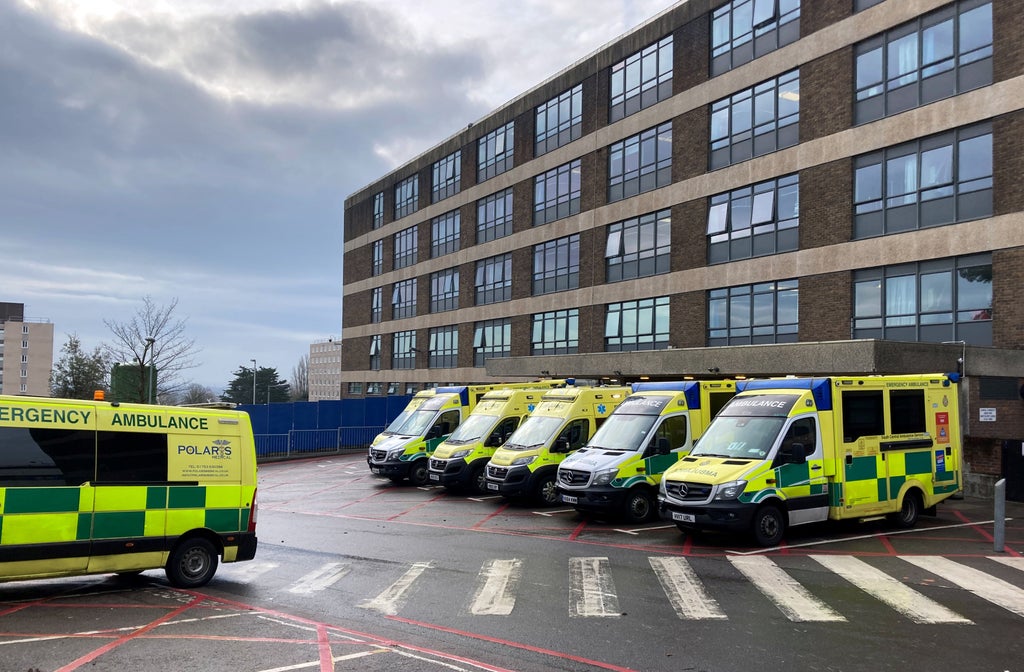
Hospitals are not able to cope with current pressures, senior doctors have warned, as a new study links long A&E waits to an increased risk of death.
Patients waiting more than five hours within an emergency department are at an increased risk of dying, according to a study published in the Emergency Medicine Journal (EMJ).
The study’s findings come as emergency care performance across England continues to deteriorate, and as pressures across hospitals mean that more patients are waiting for more than four hours in A&E departments than ever before.
According to the research, death rates for patients waiting between six and eight hours before admission to hospital were 8 per cent higher, and they were 10 per cent higher for those waiting eight to 12 hours. The study was based on data collected prior to the pandemic, and national A&E waiting times have since deteriorated further.
In November last year, the Royal College of Emergency Medicine (RCEM) warned that long delays and overcrowding in A&Es may have caused thousands of deaths during the pandemic.
Latest figures from the college revealed that almost 6,000 patients had waited more than 12 hours in A&E in the first week of January, while less than 60 per cent of hospitals had met the national four-hour waiting time target.
Researchers said that although cause and effect could not be established between longer waits and deaths after 30 days of hospital admission, they recognised a statistically significant trend.
The paper said: “Long stays in the emergency department are associated with exit block and crowding, which can delay access to vital treatments. And they are associated with an increase in subsequent hospital length of stay, especially for older patients.
“This, in turn, increases the risk of hospital-acquired infection and physiological and psychological deconditioning.”
Dr Simon Walsh, deputy chair of the British Medical Association’s (BMA) consultants committee and an emergency medicine consultant, said: “Performance against the four-hour target over recent months has been the worst recorded since it was introduced, and this paper shows that the longer patients wait, the greater their risk of death.
He said patients are having to wait longer for emergency ambulances and emergency treatment in hospital due to “decades of underinvestment in the NHS”, and that doctors are “exhausted” from working during the pandemic.
He added: “It’s clear that hospitals simply do not have the capacity to cope; patients who are medically fit for discharge remain stuck in hospital while awaiting social care, which means that there is no capacity to admit emergency patients in a timely manner, which ultimately leads to unacceptable delays in emergency departments and ambulance services.”
Responding to the paper, Katherine Henderson, president of the RCEM, said: “Performance in emergency departments has been in decline for many years now, while waiting times have risen significantly; the risk to patient safety is a growing problem. It is unacceptable and deeply concerning. No patient should be kept waiting to be admitted to a bed.
“As the paper mentions, long delays are usually caused by ‘exit block’ – where patients cannot move onto the next stage of their care due to capacity problems outside of the Emergency Department. We must eliminate this and is consequent practice, corridor care, urgently. To do this will require long term resourcing; the government must commit to publishing a long-term workforce plan for the health service and take effective steps to address the ongoing social care crisis.”
Reports of patients waiting more than 24 hours A&E, while ambulances are forced to wait outside of hospitals for hours with patients have repeatedly surfaced over the last year.
In a report on Wednesday from care watchdog the Care Quality Commission (CQC), Blackpool Teaching Hospitals A&E department was rated “inadequate”.
Inspectors found 18 patients being managed by ambulance crews outside of A&E as there was “no room in the department”, while paramedics were found to be waiting with patients within hospital corridors.
These delays at hospitals experienced by ambulance crews meant that there was an increased risk to patients in the local community who were waiting for an emergency ambulance, the regulator said.
In a statement Ann Ford, CQC deputy chief inspector for the north of England, said: “I recognise the enormous pressure NHS services are under across the country, especially in the urgent and emergency department, however it is vital that senior leaders are visible and have good oversight to manage and mitigate emerging challenges and risks, and we found that this visibility and oversight was lacking. Due to this, in the emergency department the trust wasn’t always aware of the risks to patients and consequently was not acting promptly to address them.
“We also found issues with waiting times in medical and surgical care, staff raised concerns that patients were coming to harm while on the waiting list for significant lengths of time, and we weren’t assured that patients’ conditions had been reviewed or prioritised appropriately.”







